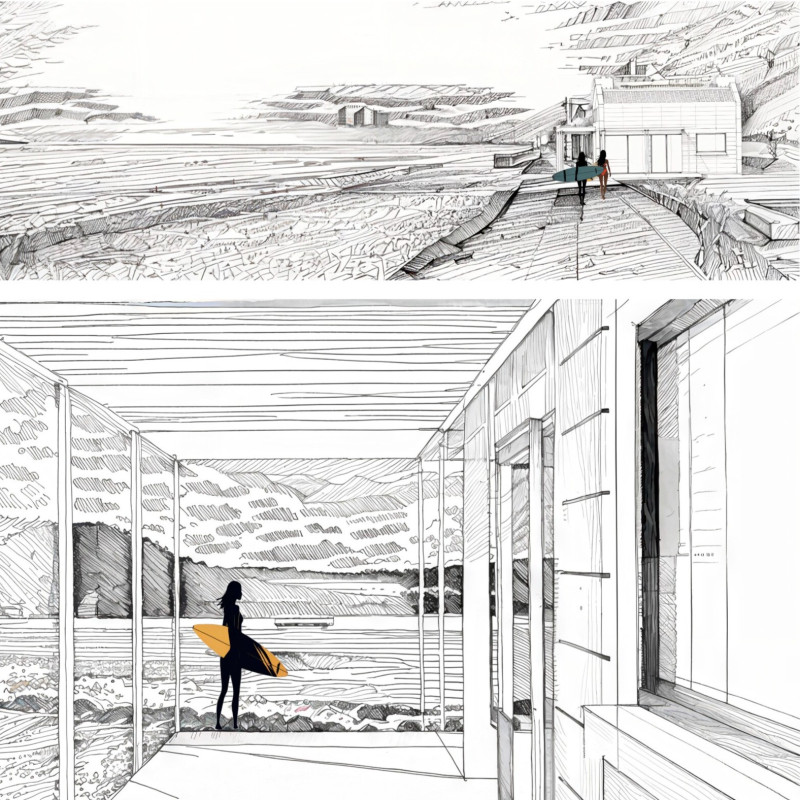5 key facts about this project
The overall design concept revolves around the idea of creating an environment that harmoniously integrates with its context. This architectural endeavor emphasizes the interplay between indoor and outdoor spaces, allowing natural light to permeate the interiors while providing expansive views of the surrounding landscape. The incorporation of large windows and sliding glass doors blurs the boundaries between the interior and exterior, creating a seamless flow that enhances the user experience.
Materials are a crucial element in this architectural project, with a carefully selected palette that balances durability and aesthetic appeal. The primary materials used include reinforced concrete, glass, and sustainably sourced timber. Concrete forms the structural backbone of the building, providing strength and stability, while the generous use of glass creates an open and airy atmosphere. The timber accents not only add warmth but also reflect a commitment to using renewable resources, aligning with contemporary sustainable practices.
Functionality is a cornerstone of this design. The layout is meticulously crafted to accommodate a variety of uses, ensuring that the spaces are flexible and adaptable. Open floor plans invite collaboration, while strategically placed private areas cater to individual needs. This thoughtful arrangement encourages both social interaction and personal retreat, reflecting an understanding of the diverse requirements of modern living.
Unique design approaches are evident throughout the project. The integration of green roofs and living walls not only enhances the building's aesthetic appeal but also contributes to its environmental performance. These features help regulate temperature, improve air quality, and provide habitats for local wildlife, embodying a holistic approach to architecture that prioritizes ecological responsibility.
Incorporating energy-efficient systems further amplifies the project's commitment to sustainability. The design includes solar panels, rainwater harvesting systems, and high-performance insulation, which collectively reduce the building's carbon footprint while ensuring comfort for its occupants. These elements showcase an understanding of contemporary architectural trends that emphasize sustainable practices and responsible resource management.
Furthermore, the project's context plays a significant role in its design philosophy. Situated in a scenic landscape, the architecture takes advantage of its location by orienting the building to maximize daylight exposure and views of the natural surroundings. This not only enhances the aesthetic quality of the spaces but also creates an emotional connection between the occupants and the environment.
The resulting architectural outcome is a compelling representation of modern design principles. It effectively merges functionality with a strong sense of place, encouraging occupants to engage with their surroundings in meaningful ways. Each aspect of the design is executed with precision, ensuring that the final structure is not merely an assemblage of materials, but a cohesive entity that embodies the project's core values.
This project stands as a testament to the potential of architecture to address contemporary challenges while creating spaces that are not only practical but also enrich the lives of those who inhabit them. For a deeper understanding of the design, the architectural plans, sections, and design concepts merit exploration. Readers are encouraged to delve into the presentation of this project to appreciate the finer details and innovative ideas that define it.


























